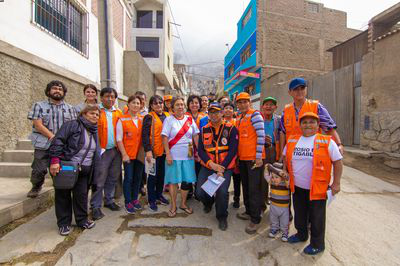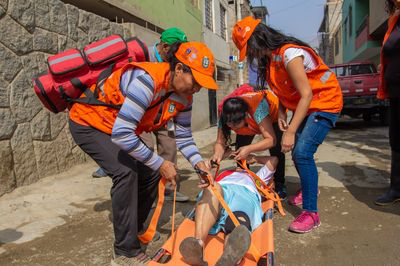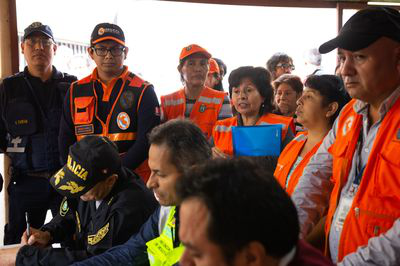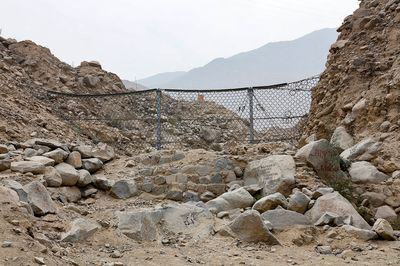For as long as she can remember, Déborah has been interested in helping others. When the Zurich Flood Resilience Alliance started working with her community Déborah joined the first aid brigade. “I have always wanted to help the sick, those who have a hard time”.

Déborah’s home community in Chosica, Peru borders the Carosio gully, which brings risks of flooding and landslides when it rains. Having lived in the community for 24 years Déborah is very familiar with the impacts of these hazards.
In 2015 the community was hit by a particularly devastating flash flood.
Déborah lost most of the first and second floors of her home. “Both floors of my house were covered by debris. They are still damaged years later. I lost my living room, my kitchen, and on the second floor I lost my bedroom. Only my son’s room was left”.
Despite losing so much in this landslide Déborah kept going. Soon after she joined the brigades set up by Practical Action as part of the Zurich Flood Resilience Alliance programme in Peru.

Women taking the lead in resilience building
“I belong to the first aid brigade. Most of us are women. In the event of flash floods, it tends to be the women who react first and step up to support our community. The vast majority of men are either working far from the area or are not very involved. Often the men are first to escape from the flash floods”, she laughs.

Déborah tells us that her work as a brigadier is contributing to disaster prevention, as well as response. “After a flash flood, our mission as brigade members is to visit all the houses in the town to check that there are no casualties. Then we check material things, both in people’s houses and public utilities like the areas water reservoir.”
Déborah received training from Practical Action to join the community’s Early Warning System (EWS) task force. The EWS reduce the impacts of floods by giving people the time and knowledge needed to prepare for and respond to flooding.
Déborah is in charge of the monitoring and alert functions of the EWS. “We have a station in the upper part of the hill that measures precipitation. We brigadiers have an application on our mobile phone that tells us the humidity and when to sound the alarm, which is installed in a neighbour’s house. When the alarm goes off, people evacuate to safe areas, which we have marked out in collaboration with Practical Action”.
The government is now taking us into account

Déborah is part of Asodacarosio (loosely translated as Carosio’s gully victims association), an association of residents from local communities at risk from Carosio’s flash floods and landslides.
The group was formed to give the community a voice to confront and collaborate with authorities on issues like disaster risk reduction. “Above all we want to create an outlet for the river that doesn’t harm us. We have reached out to the central government, and they are now taking us into account”.
The Association’s biggest achievement thus far is the first geodynamic mesh fences constructed in Peru. “Practical Action told us that in Switzerland they had these mesh fences to avoid disasters, and it encouraged us to pursue them. You can say that a key reason for creating Asodacarosio was having these meshes constructed in the area”.

The need for community leadership in a successful project
After being installed in the Carosio ravine and protecting the community from landslides, the geodynamic meshes were replicated in other areas of Chosica. Unfortunately the success has not been replicated however. The intervention wasn’t embedded in, and owned by, the communities they way the Carosio fences were. People have not been clear on the benefits the meshes can bring and fences have been left to deteriorate or be dismantled.
“Parts have been stolen. The materials are taken. That doesn’t happen here because the entire population have agreed to take care of the meshes. If there is a stranger who goes up to the area where they’re located, we go there to see what is happening. The brigade members are the first to defend these meshes, just as they defend us from the impacts of flash floods.”
Déborah’s experience perfectly illustrates how working in close collaboration with communities is vital when identifying and implementing successful flood resilience solutions.
A version of this story was originally published by Practical Action Peru in 2018. You can read this in Spanish here.

Comments